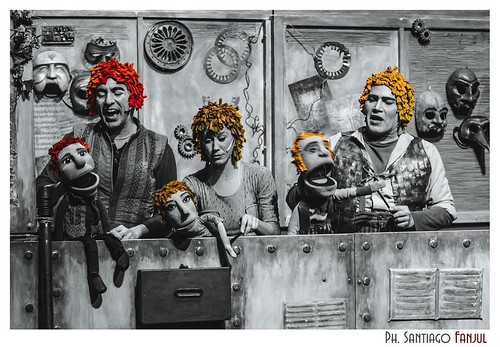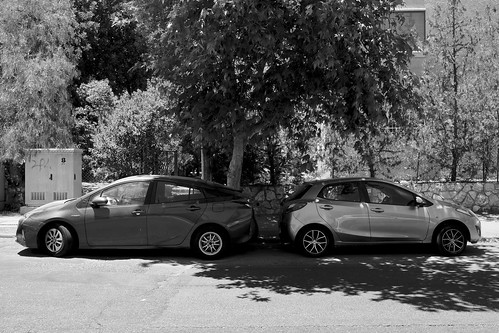Sed frequency of metastasis development, high mRNA expression levels of the two RTKs EPHB6 and DKFZ1 indicated a reduced risk for metastasis [20]. Recently, we identified EPHB6 as an epigenetically silenced metastasis suppressor in NSCLC, and expression of EPHB6 prevented metastasis formation in a xenograft metastasis model [21]. Here, we scrutinized the EPHB6 variation by DNA sequencing, and characterized the functional consequences of EPHB6 mutations in vivo and in vitro with regard to their potential role in NSCLC metastasis.Identification of EPHB6 MutationIdentification of EPHB6 MutationFigure 1. EPHB6 MedChemExpress 86168-78-7 mutants and functional domains. A) Functional domains of 12926553 the EPHB6 gene are shown in relation to their exons and to identified mutations for EPHB6. The description of the mutations correspond to their localization on the protein sequence. The mutations R52C, Q498H, and DPG915-917del were identified in NSCLC patient samples in current study. B) Electropherogram of the EPHB6-wildtype sequence and the deletion mutant for EPHB6. C) Expression levels of EPHB6-mutants in transfected cells. Bulk transfected cells were GFP sorted and expanded in selection media. Expression levels are shown for bulk cultures with .90 GFP expression. Differences of expression analysis between protein levels and mRNA levels are shown. For quantitative real-time PCR the average and standard deviation of three independent experiments are shown. The western blot shows a representative example. doi:10.1371/journal.pone.0044591.gMaterials and Methods Cell cultureThe NSCLC cell lines involved in current study have been described previously [21]. Briefly, A549 lung adenocarcinoma cells were cultured at 37uC, high humidity and 5 CO2  in DMEM (Dulbeccos Modified Eagle’s medium, Invitrogen, Carlsbad, CA). The medium was supplemented with 10 fetal calf serum (FCS) and 1 streptomycin and penicillin. HTB56 and HTB58 lung adenocarcinoma cells were cultured at 37uC, high humidity, and 5 CO2 in MEM (Modified Eagle’s medium, Invitrogen, Carlsbad. CA). The medium was supplemented with 10 FCS, 1 streptomycin and penicillin, 1 glutamine, 1 sodium pyruvate, and 1 nonessential amino acid.Cell line identity was confirmed by STR-genotyping.AGGCTGGCGGGGAAAGGCCTTCCCAGG), reverse (59CCTGGGAAGGCCTTTCCCCGCCAGCCT) and using pcDNA4-EPHB6 vector as the template. Afterwards, the correct sequence was verified by sequencing. Primers for further mutations will be provided 1516647 upon ASP-015K site request.Expression Constructs and TransfectionHuman A549 cells were co-transfected using the transfection reagent Nanofectin (PAA, Austria) according to the manufacturer’s protocol. Co-transfection was carried out with either pcDNA4 (empty vector control), wild type EPHB6 expression construct (pcDNA4-EPHB6-wt) or EPHB6 mutant expression constructs, each with an EGFP expressing vector construct (pcDNA3.1-GFP, expressing enhanced green fluorescent protein EGFP) for selection and identification of transfected cells. Transfected cells were selected with 700 mg/ml
in DMEM (Dulbeccos Modified Eagle’s medium, Invitrogen, Carlsbad, CA). The medium was supplemented with 10 fetal calf serum (FCS) and 1 streptomycin and penicillin. HTB56 and HTB58 lung adenocarcinoma cells were cultured at 37uC, high humidity, and 5 CO2 in MEM (Modified Eagle’s medium, Invitrogen, Carlsbad. CA). The medium was supplemented with 10 FCS, 1 streptomycin and penicillin, 1 glutamine, 1 sodium pyruvate, and 1 nonessential amino acid.Cell line identity was confirmed by STR-genotyping.AGGCTGGCGGGGAAAGGCCTTCCCAGG), reverse (59CCTGGGAAGGCCTTTCCCCGCCAGCCT) and using pcDNA4-EPHB6 vector as the template. Afterwards, the correct sequence was verified by sequencing. Primers for further mutations will be provided 1516647 upon ASP-015K site request.Expression Constructs and TransfectionHuman A549 cells were co-transfected using the transfection reagent Nanofectin (PAA, Austria) according to the manufacturer’s protocol. Co-transfection was carried out with either pcDNA4 (empty vector control), wild type EPHB6 expression construct (pcDNA4-EPHB6-wt) or EPHB6 mutant expression constructs, each with an EGFP expressing vector construct (pcDNA3.1-GFP, expressing enhanced green fluorescent protein EGFP) for selection and identification of transfected cells. Transfected cells were selected with 700 mg/ml  G418 (Sigma, St. Louis, MO, USA) and 400 mg/ml Zeocin (Invitrogen, Carlsbad, CA, USA). Bulk cultures were FACS sorted for GFPexpression and expanded. In addition to bulk cultures, we also pooled multiple high GFP expressing clones to obtain sufficient expression levels. Expression was verified by Western blotting and real-time RT-PCR.Patient SpecimensPrimary tumor specimens and tumor-free lung tissues were obtained at the time of initial surgery from 80 patient.Sed frequency of metastasis development, high mRNA expression levels of the two RTKs EPHB6 and DKFZ1 indicated a reduced risk for metastasis [20]. Recently, we identified EPHB6 as an epigenetically silenced metastasis suppressor in NSCLC, and expression of EPHB6 prevented metastasis formation in a xenograft metastasis model [21]. Here, we scrutinized the EPHB6 variation by DNA sequencing, and characterized the functional consequences of EPHB6 mutations in vivo and in vitro with regard to their potential role in NSCLC metastasis.Identification of EPHB6 MutationIdentification of EPHB6 MutationFigure 1. EPHB6 mutants and functional domains. A) Functional domains of 12926553 the EPHB6 gene are shown in relation to their exons and to identified mutations for EPHB6. The description of the mutations correspond to their localization on the protein sequence. The mutations R52C, Q498H, and DPG915-917del were identified in NSCLC patient samples in current study. B) Electropherogram of the EPHB6-wildtype sequence and the deletion mutant for EPHB6. C) Expression levels of EPHB6-mutants in transfected cells. Bulk transfected cells were GFP sorted and expanded in selection media. Expression levels are shown for bulk cultures with .90 GFP expression. Differences of expression analysis between protein levels and mRNA levels are shown. For quantitative real-time PCR the average and standard deviation of three independent experiments are shown. The western blot shows a representative example. doi:10.1371/journal.pone.0044591.gMaterials and Methods Cell cultureThe NSCLC cell lines involved in current study have been described previously [21]. Briefly, A549 lung adenocarcinoma cells were cultured at 37uC, high humidity and 5 CO2 in DMEM (Dulbeccos Modified Eagle’s medium, Invitrogen, Carlsbad, CA). The medium was supplemented with 10 fetal calf serum (FCS) and 1 streptomycin and penicillin. HTB56 and HTB58 lung adenocarcinoma cells were cultured at 37uC, high humidity, and 5 CO2 in MEM (Modified Eagle’s medium, Invitrogen, Carlsbad. CA). The medium was supplemented with 10 FCS, 1 streptomycin and penicillin, 1 glutamine, 1 sodium pyruvate, and 1 nonessential amino acid.Cell line identity was confirmed by STR-genotyping.AGGCTGGCGGGGAAAGGCCTTCCCAGG), reverse (59CCTGGGAAGGCCTTTCCCCGCCAGCCT) and using pcDNA4-EPHB6 vector as the template. Afterwards, the correct sequence was verified by sequencing. Primers for further mutations will be provided 1516647 upon request.Expression Constructs and TransfectionHuman A549 cells were co-transfected using the transfection reagent Nanofectin (PAA, Austria) according to the manufacturer’s protocol. Co-transfection was carried out with either pcDNA4 (empty vector control), wild type EPHB6 expression construct (pcDNA4-EPHB6-wt) or EPHB6 mutant expression constructs, each with an EGFP expressing vector construct (pcDNA3.1-GFP, expressing enhanced green fluorescent protein EGFP) for selection and identification of transfected cells. Transfected cells were selected with 700 mg/ml G418 (Sigma, St. Louis, MO, USA) and 400 mg/ml Zeocin (Invitrogen, Carlsbad, CA, USA). Bulk cultures were FACS sorted for GFPexpression and expanded. In addition to bulk cultures, we also pooled multiple high GFP expressing clones to obtain sufficient expression levels. Expression was verified by Western blotting and real-time RT-PCR.Patient SpecimensPrimary tumor specimens and tumor-free lung tissues were obtained at the time of initial surgery from 80 patient.
G418 (Sigma, St. Louis, MO, USA) and 400 mg/ml Zeocin (Invitrogen, Carlsbad, CA, USA). Bulk cultures were FACS sorted for GFPexpression and expanded. In addition to bulk cultures, we also pooled multiple high GFP expressing clones to obtain sufficient expression levels. Expression was verified by Western blotting and real-time RT-PCR.Patient SpecimensPrimary tumor specimens and tumor-free lung tissues were obtained at the time of initial surgery from 80 patient.Sed frequency of metastasis development, high mRNA expression levels of the two RTKs EPHB6 and DKFZ1 indicated a reduced risk for metastasis [20]. Recently, we identified EPHB6 as an epigenetically silenced metastasis suppressor in NSCLC, and expression of EPHB6 prevented metastasis formation in a xenograft metastasis model [21]. Here, we scrutinized the EPHB6 variation by DNA sequencing, and characterized the functional consequences of EPHB6 mutations in vivo and in vitro with regard to their potential role in NSCLC metastasis.Identification of EPHB6 MutationIdentification of EPHB6 MutationFigure 1. EPHB6 mutants and functional domains. A) Functional domains of 12926553 the EPHB6 gene are shown in relation to their exons and to identified mutations for EPHB6. The description of the mutations correspond to their localization on the protein sequence. The mutations R52C, Q498H, and DPG915-917del were identified in NSCLC patient samples in current study. B) Electropherogram of the EPHB6-wildtype sequence and the deletion mutant for EPHB6. C) Expression levels of EPHB6-mutants in transfected cells. Bulk transfected cells were GFP sorted and expanded in selection media. Expression levels are shown for bulk cultures with .90 GFP expression. Differences of expression analysis between protein levels and mRNA levels are shown. For quantitative real-time PCR the average and standard deviation of three independent experiments are shown. The western blot shows a representative example. doi:10.1371/journal.pone.0044591.gMaterials and Methods Cell cultureThe NSCLC cell lines involved in current study have been described previously [21]. Briefly, A549 lung adenocarcinoma cells were cultured at 37uC, high humidity and 5 CO2 in DMEM (Dulbeccos Modified Eagle’s medium, Invitrogen, Carlsbad, CA). The medium was supplemented with 10 fetal calf serum (FCS) and 1 streptomycin and penicillin. HTB56 and HTB58 lung adenocarcinoma cells were cultured at 37uC, high humidity, and 5 CO2 in MEM (Modified Eagle’s medium, Invitrogen, Carlsbad. CA). The medium was supplemented with 10 FCS, 1 streptomycin and penicillin, 1 glutamine, 1 sodium pyruvate, and 1 nonessential amino acid.Cell line identity was confirmed by STR-genotyping.AGGCTGGCGGGGAAAGGCCTTCCCAGG), reverse (59CCTGGGAAGGCCTTTCCCCGCCAGCCT) and using pcDNA4-EPHB6 vector as the template. Afterwards, the correct sequence was verified by sequencing. Primers for further mutations will be provided 1516647 upon request.Expression Constructs and TransfectionHuman A549 cells were co-transfected using the transfection reagent Nanofectin (PAA, Austria) according to the manufacturer’s protocol. Co-transfection was carried out with either pcDNA4 (empty vector control), wild type EPHB6 expression construct (pcDNA4-EPHB6-wt) or EPHB6 mutant expression constructs, each with an EGFP expressing vector construct (pcDNA3.1-GFP, expressing enhanced green fluorescent protein EGFP) for selection and identification of transfected cells. Transfected cells were selected with 700 mg/ml G418 (Sigma, St. Louis, MO, USA) and 400 mg/ml Zeocin (Invitrogen, Carlsbad, CA, USA). Bulk cultures were FACS sorted for GFPexpression and expanded. In addition to bulk cultures, we also pooled multiple high GFP expressing clones to obtain sufficient expression levels. Expression was verified by Western blotting and real-time RT-PCR.Patient SpecimensPrimary tumor specimens and tumor-free lung tissues were obtained at the time of initial surgery from 80 patient.
